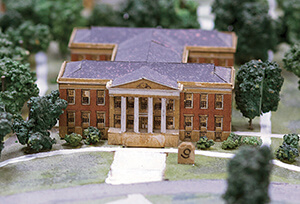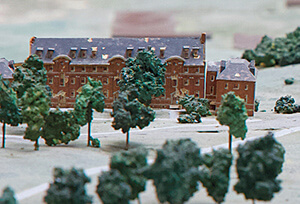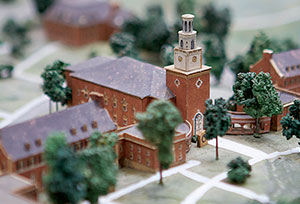- October 03, 2018
- By Sala Levin ’10
It was the equivalent of finding treasure in your grandparents’ attic: Construction workers who were transforming Holzapfel Hall into part of the Edward St. John Learning and Teaching Center found a forgotten 1930s model of a University of Maryland campus that never was.
The model, measuring 5 by 3 ½ feet, was one of several created by an architectural firm commissioned by the university to envision its first major expansion since the Great Fire of 1912. Three finalists were selected: The winner (campus as we know it today, more or less) is housed in the Architecture Building under the auspices of the architecture preservation program; one model has been lost; and the third was moldering away in the attic of Holzapfel.
“I got a call that they’d discovered a model and they didn’t know what to do with it. They weren’t even sure what it was,” says Brian Kelly, professor of architecture. “I went over and took a look and said, ‘I know exactly what that is.’”
Made of wood and cardboard, with buildings no taller than an inch or so, the model was damaged by water and covered in grime, mold, and bird and bat droppings. Joe Largess, who runs the fabrication lab in the School of Architecture, Planning and Preservation, has spent two years restoring it.
After cleaning it, gluing and reconstructing buildings in disrepair, painting and more, Largess and student assistants have made the model “as good as we can get it,” he says. He has built a Plexiglass-covered table that displays the model in the Architecture Library.
Now, everyone can see an alternate version of Maryland.
